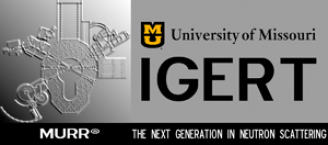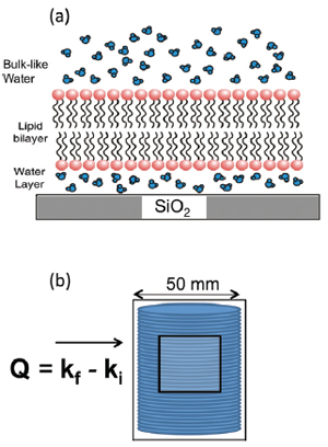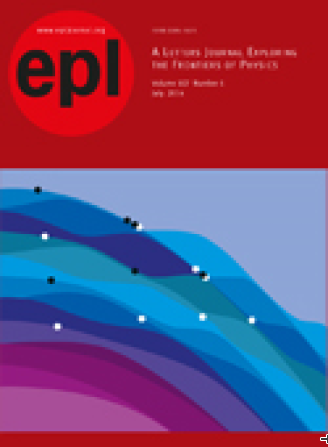Copyright 2012 neutronsources.org | All rights reserved. | Powered by FRM II | Imprint / Privacy Policy
IGERT Study Makes Editor's Choice
28/10/2014

Neutron scattering (NS) capabilities at MURR are the cornerstone of MU’s first ever NSF IGERT award (National Science Foundation Integrative Graduate Education and Research Traineeship, DGE-1069091) administered by MU Physics Professor Hak Taub. The program, “Neutron Scattering for the Science and Engineering of the 21st Century”, is designed to train those who will use and operate the nation’s state of the art federal laboratories with a keen emphasis on comprehensive, cross-disciplinary and effective team solutions for the broad range of problems facing mankind.

Findings from one of the MU IGERT program projects were hand-picked as an “Editor’s Choice“ in the journal of EuroPhysics Letters as delivering “important new research in topical areas that are insightful and useful to the research community.”
The article, “On the freezing behavior and diffusion of water in proximity to single-supported zwitterionic and anionic bilayer lipid membranes”, was co-authored by A. Miskowiec, Z.N. Buck, M.C. Brown, H. Kaiser, F.Y. Hansen, G.M. King, H. Taub, R. Jiji, J.W. Cooley, M. Tyagi, S.O. Diallo, E. Mamontov and K.W. Herwig. Their affiliations include MU Physics, MURR, MU Chemistry, Technical University of Denmark (Chemistry), NIST Center for Neutron Research, University of Maryland-College Park (Materials Science and Engineering) and ORNL Spallation Neutron Source.
Lead author Andrew Miskowiec, the first MU IGERT PhD graduate, provides a brief explanation of the team’s work.

“Currently, with the advent of modern computer simulations and high resolution microscopy techniques, the scientific community can now access and study the length scale of the lipid bilayer. We seek to provide foundational knowledge for this field by answering, experimentally, the question: What is the detailed atomic interaction of water with the lipid membrane and what affect do different types of lipids have on that interaction?
“By using neutron scattering, which can access the incredibly small length scales and fast motions of water, we identified important differences in the behavior of water near charge-neutral lipids and anionic lipids. The negatively charged anionic lipids are a small fraction of lipids in real cell membranes, but they significantly slow the rate of motion of water in the nearby area. Different proteins live near different lipids, and for scientists developing new drugs to target specific membrane proteins, understanding what affect the lipid composition has on the nearby water might give clues to designing more efficient drugs.”
As evidenced by the diversity of the authors, their disciplines and their organizations, the IGERT program at MU is performing as planned. The global NS community is an interactive group, and MU and MURR have drawn various members of that community because of our unique NS capabilities. Flemming Hansen has collaborated with MU and MURR for more than three decades; Ken Herwig was a Research Scientist at MURR for several years before accepting positions at national laboratories; and Helmut Kaiser (former Senior Research Scientist) recently returned to MURR to aid the IGERT grant.
To read the full article, click on the graphic at right.
Research & Development
MURR staff and their colleagues at the University of Missouri have fostered an environment for research for improving medical diagnostic tools, finding ways to battle cancer and other diseases with radioisotopes, preventing serious illnesses with screenings to reach optimal nutritional intake, improving the quality of life and knowledge base for people worldwide, analyzing materials and artifacts to help better understand the history of our planet and its people – and investigating materials to reveal their properties, fostering greater improvement of our understanding of matter and energy.
Life Sciences
MURR is a leader in radiopharmaceutical research, trace element epidemiology, boron neutron capture therapy and radioisotope tracer technology.
Social Sciences
Ever wanted to know more about Incan burial sites, and how/where our ancestors lived out their lives? That’s what makes the science of archaeometry so exciting.
Material Sciences
MURR uses the neutrons produced by it’s 10 MW reactor to investigate the structure and dynamics of materials as well as modifying their properties.
Interested in research opportunities at MURR? Contact Dr. David Robertson, Director of Research at MURRResearchDirector@missouri.edu
